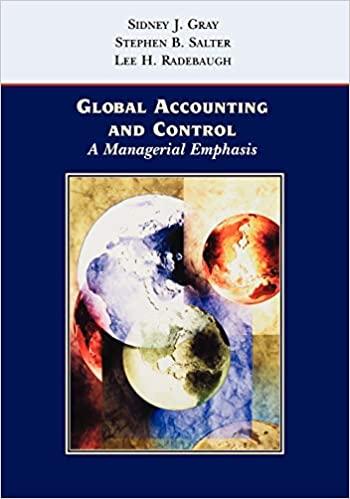1. 2. 3. Question 1 Maxco Ltd is a company in the renovation business. At 1 January 20x4, Maxco Ltd had a deferred tax liability balance of $27,880 and it was probable that future taxable profits would be available for the utilization of any deductible temporary differences. Maxco Ltd has a 31 December financial year end and complies with all Singapore Financial Reporting Standards (International). The following items are relevant information related to Maxco Ltd's operations and financial statements: Prepaid expenses at 1 January 20x4 was $18,000. During 20x4, a further prepayment of $50,000 was made, and $52,000 of prepayment was recognised as expense in Maxco Ltd's income statement. For tax purposes, prepaid expenses are deductible when paid. The provision for warranty balance as at 1 January 20x4 was $46,000. Warranty expenses recognised during 20x4 was $116,000. Warranty claims in 20x4 amounted to $90,000. For tax purposes, warranty expense is deductible only when there is a warranty claim. Dividends receivable as at 1 January 20x4 was $140,000. The dividends received during 20x4 amounted to $160,000 while the dividend income for 20x4 was $200.000. Dividend income is taxed when received. A piece of equipment was purchased on 1 January 20x2 at a cost of $200,000. The useful life of this equipment was 3 years and the residual value was $20,000. Depreciation was on a straight-line basis. Capital allowances of $200,000 were claimed in full in 20x2. Since full capital allowances were given on the cost of the equipment, any residual value recovered on disposal was taxable. The equipment was sold on 31 December 20x4 for $20,000. Maxco Ltd acquired an automated crane on 1 January 20x4 for $300,000. Under a new capital investment scheme launched by the government, such automated equipment was entitled to an accelerated one-year 150% capital allowance in its first year of use. Maxco Ltd depreciated this crane over 6 years in its books, with zero residual value. Maxco Ltd received cash interest of $110,000 on its deposits with its banks in 20x4. The opening balance of its interest receivable account in 20x4 was $30,000 while interest income reported on its 20x4 income statement was $120,000. Interest income is not taxable. 7. The opening balance of its allowance for impairment of accounts receivable in 20x4 was $28,000. During the year, impairment loss relating to accounts receivable of $42,000 was charged to the income statement. The allowance for impairment of accounts receivable had a balance of $19,000 on 31 December 20x4. For tax purposes, only write-offs pertaining to accounts receivable are recognised. Revenue is taxed when it is recognised in the accounting books. 4. 5. 6. 1. 2. 3. Question 1 Maxco Ltd is a company in the renovation business. At 1 January 20x4, Maxco Ltd had a deferred tax liability balance of $27,880 and it was probable that future taxable profits would be available for the utilization of any deductible temporary differences. Maxco Ltd has a 31 December financial year end and complies with all Singapore Financial Reporting Standards (International). The following items are relevant information related to Maxco Ltd's operations and financial statements: Prepaid expenses at 1 January 20x4 was $18,000. During 20x4, a further prepayment of $50,000 was made, and $52,000 of prepayment was recognised as expense in Maxco Ltd's income statement. For tax purposes, prepaid expenses are deductible when paid. The provision for warranty balance as at 1 January 20x4 was $46,000. Warranty expenses recognised during 20x4 was $116,000. Warranty claims in 20x4 amounted to $90,000. For tax purposes, warranty expense is deductible only when there is a warranty claim. Dividends receivable as at 1 January 20x4 was $140,000. The dividends received during 20x4 amounted to $160,000 while the dividend income for 20x4 was $200.000. Dividend income is taxed when received. A piece of equipment was purchased on 1 January 20x2 at a cost of $200,000. The useful life of this equipment was 3 years and the residual value was $20,000. Depreciation was on a straight-line basis. Capital allowances of $200,000 were claimed in full in 20x2. Since full capital allowances were given on the cost of the equipment, any residual value recovered on disposal was taxable. The equipment was sold on 31 December 20x4 for $20,000. Maxco Ltd acquired an automated crane on 1 January 20x4 for $300,000. Under a new capital investment scheme launched by the government, such automated equipment was entitled to an accelerated one-year 150% capital allowance in its first year of use. Maxco Ltd depreciated this crane over 6 years in its books, with zero residual value. Maxco Ltd received cash interest of $110,000 on its deposits with its banks in 20x4. The opening balance of its interest receivable account in 20x4 was $30,000 while interest income reported on its 20x4 income statement was $120,000. Interest income is not taxable. 7. The opening balance of its allowance for impairment of accounts receivable in 20x4 was $28,000. During the year, impairment loss relating to accounts receivable of $42,000 was charged to the income statement. The allowance for impairment of accounts receivable had a balance of $19,000 on 31 December 20x4. For tax purposes, only write-offs pertaining to accounts receivable are recognised. Revenue is taxed when it is recognised in the accounting books. 4. 5. 6







